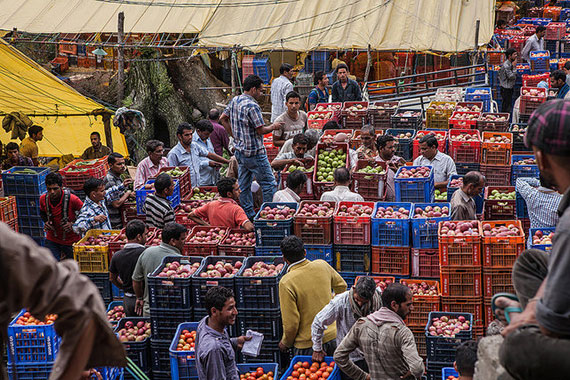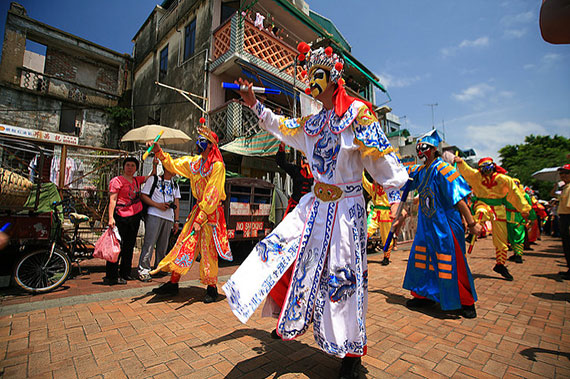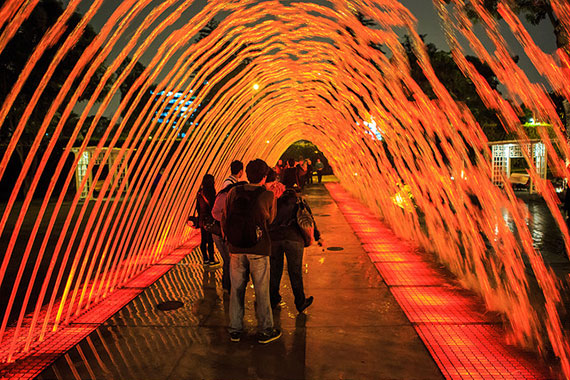Many articles discuss the best practices for travel photography, and many of them, while providing worthwhile advice, tend not to take into account the fact that conditions are not always perfect for making photographs. The sky is not always blue, the crowds of tourists do not always clear a path for you, the light is not always perfect, and you may not always have the latest gear. There are, however, some practices that you can put into place to help you create strong images when time is short and you can’t wait for conditions to improve.

Photo by sandeepachetan.com travel photography; ISO 100, f/7.1, 1/200-second exposure.
Do your homework
It’s well worth your while to do some research on your destination before you leave. This will give you an idea of what things are going to look like when you arrive. If you have an idea of what you want to photograph before getting to a location, you may also be able to research the best vantage points and times to be there. This will help you plan your day and allow you to fit in more shooting than if you leave it all until you arrive and try to make it up on the spot.
Although there is much to be said for simply arriving and wandering a city to get your bearings and shooting what appeals to you, if you are short of time, you might find this a much more stressful and pressured experience and not enjoy the experience of photographing in a new place. And enjoyment is the whole purpose of photography in the first place.
Shoot in the middle of the day
So many photography instructors and books tell you to shoot in the “golden hours” the hour just after sunrise and just before sunset, because these times present the best light for photography—the soft golden light that is most flattering. And they’re right. Using this type of light makes it easier to create a standout image. There are, however, some practicality issues with this. If you’re at a destination for only a short period of time, you can’t afford to lose any time shooting. Shooting for only two hours when you’re at your location for only a day or two almost always results in regret for lost opportunities.

Photo by LASZLO ILYES; ISO 50, f/5.6, 1/125-second exposure.
That’s an awful lot of time in between to waste, and there is really no reason not to keep on shooting throughout the day. It can also help to push you creatively, as you will need to come up with ways to deal with harsh sunlight or flat skies. These conditions can help in adding mood to an image if you use them to your advantage. A harsh noon sun, for example, lets you feel the heat of the day in the image by producing intense color. A soft overcast day helps to keep the detail in objects or people’s faces.
Know your equipment
Know how to use your camera without the need to think about it. When you have to stop and think about how to adjust settings, you miss moments. There are so many considerations to make when making a photograph that it can be a bit overwhelming. What is my subject? How to I frame the image? What aperture works best? Do I zoom out or in? And once you’ve decided all this, you still need to adjust the camera settings to achieve the desired outcome. And all this in a split second!
So if you can make these adjustments while making the decisions and not having to take the camera away from your eye, it might just be the difference between capturing the image you see in your mind and missing the moment. But how to practice this. It seems simplistic, but getting out there and shooting as much as you can is the best way.
Concentrate on where the various controls are and adjusting them without taking the camera away from your eye. Start with stationary subjects and move onto moving subjects. It will be difficult and a little frustrating at first but worthwhile once you put it into practice and come away with the images that you envisioned.

Photo by Murray Foubister; ISO 5000, f/2.8, 1/40-second exposure.
We would all love to have weeks or even months to stay at a location and explore it fully and take our time to make great photographs, but for most of us, it’s just not practical. So to get the best out of our photography when we do travel somewhere new, we need to adapt and be flexible. Working out the best way to do this will make your next trip both more rewarding and more enjoyable.
About the Author:
Mark Eden is a freelance travel photographer and writer, who creates images and articles for various print and digital publications. Expanse Photography is his website and blog.
Go to full article: Travel Photography in the Real World
What are your thoughts on this article? Join the discussion on Facebook
PictureCorrect subscribers can also learn more today with our #1 bestseller: The Photography Tutorial eBook
The post Travel Photography in the Real World appeared first on PictureCorrect.